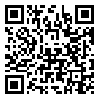Volume 73, Issue 6 (September 2015)
Tehran Univ Med J 2015, 73(6): 425-430 |
Back to browse issues page
Download citation:
BibTeX | RIS | EndNote | Medlars | ProCite | Reference Manager | RefWorks
Send citation to:



BibTeX | RIS | EndNote | Medlars | ProCite | Reference Manager | RefWorks
Send citation to:
Zeynali J, Ataipour Y. Clinical outcome of Induction therapies in patients undergoing renal transplantation. Tehran Univ Med J 2015; 73 (6) :425-430
URL: http://tumj.tums.ac.ir/article-1-6827-en.html
URL: http://tumj.tums.ac.ir/article-1-6827-en.html
1- Department of Nephrology and Internal Medical, Khomeini Medical Center, Urmia University of Medical Sciences, Urmia, Iran. , zeinali_im@yahoo.com
2- Department of Nephrology and Internal Medical, Hasheminejad Center, Iran University of Medical sciences, Tehran, Iran.
2- Department of Nephrology and Internal Medical, Hasheminejad Center, Iran University of Medical sciences, Tehran, Iran.
Abstract: (5886 Views)
Background: The goal of Induction therapy is to prevent acute rejection during the early posttransplantation period by providing a high degree of Immunosuppression at the time of transplantation. Induction therapy is often considered essential to optimize outcomes, especially in patients at high risk for poor short-term outcomes. The optimal prophylactic induction immunosuppressive therapy to prevent kidney transplant rejection remains controversial and historically, immunosuppressant selection was solely based on efficacy in preventing rejection.
Methods: In a cross-sectional retrospective study, 410 cases of renal graft recipients were reviewed in the Hasheminejad Hospital, Tehran, Iran from March 2008 to March 2011. The adult patients with induction therapy with age over 18 years were studied for the indication, results and adverse effects of Induction therapy.
Results: From 66 transplanted patients with induction therapy, 44(66.7%) patients were male. The mean age±SD of patients with induction therapy was 39.9±13.2 years. The most common cause of Induction therapy was cadaveric transplantation (45.5%), other causes was the prior history of transplantation (24.2%), without risk factor of rejection, panel reactivity test (PRT)>20% and delay graft function. Anti-thymocyte globulin (rabbit) is the most commonly used agent (97%) for induction therapy. The rate of acute rejection was 16.7% percent (11 patients), that the most of them related to the panel positive patients. The most common adverse effect of anti-thymocyte globulin was thrombocytopenia (15.2%) and the rate of New Onset Diabetes mellitus After transplantation (NODAT) and leukopenia was 10.6%, 1.5%, respectively. The urine culture was positive in 6 (9.1%) patients with induction therapy and positive blood culture was seen in one patient (1.5%). The viral and fungal infections were not seen.
Conclusion: No standard Induction immunosuppressive regimen exists for patients undergoing renal transplantation. Anti-thymocyte globulin with low dose regimen is the most commonly used agent. The PRT>20% had the most association with acute allograft rejection. The most common side effect of induction therapy was thrombocytopenia.
Keywords: cross-sectional studies, immunosuppression, induction therapy, kidney transplantation, transplant rejection
Type of Study: Original Article |
Send email to the article author
| Rights and permissions | |
 |
This work is licensed under a Creative Commons Attribution-NonCommercial 4.0 International License. |





